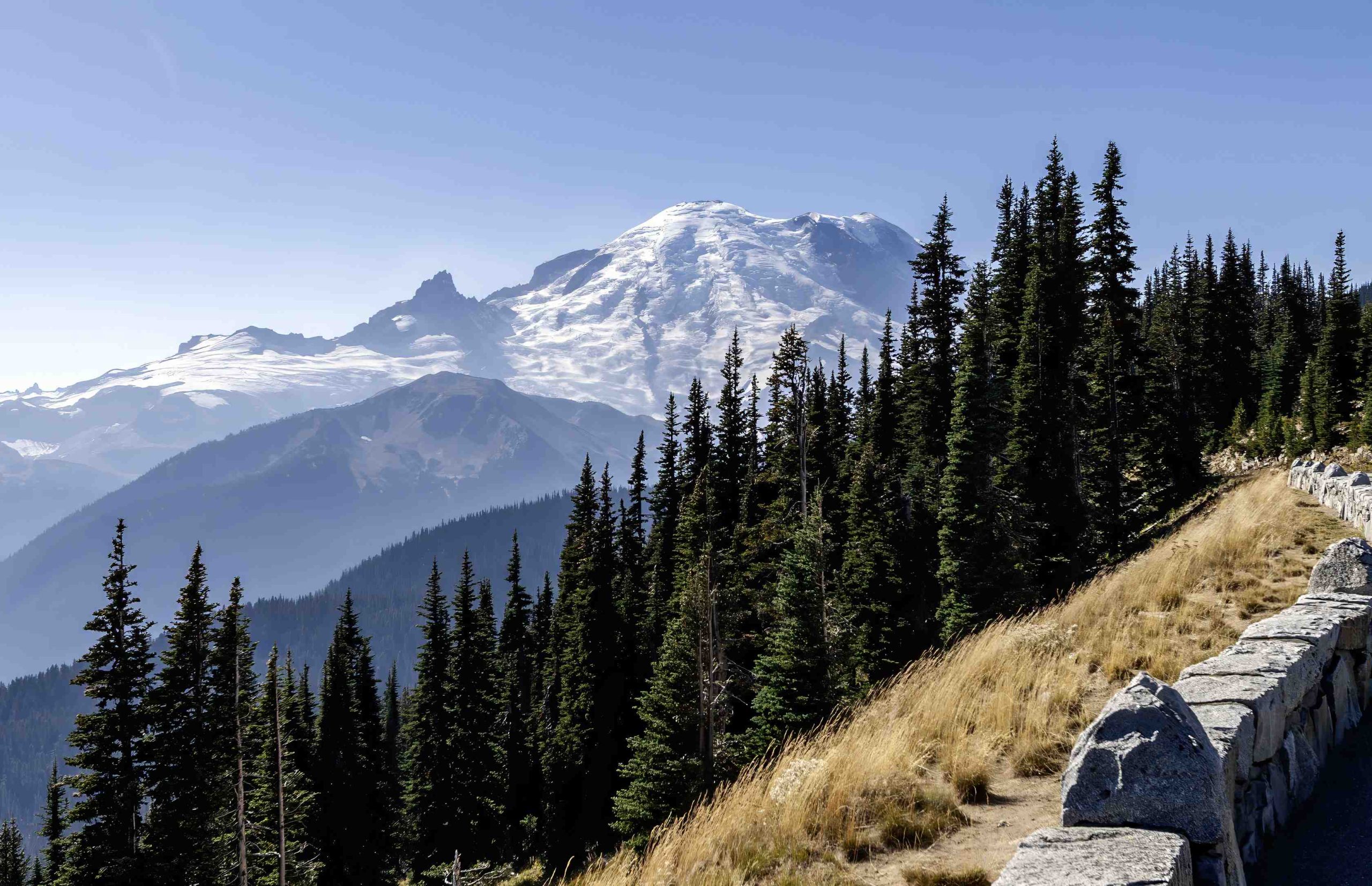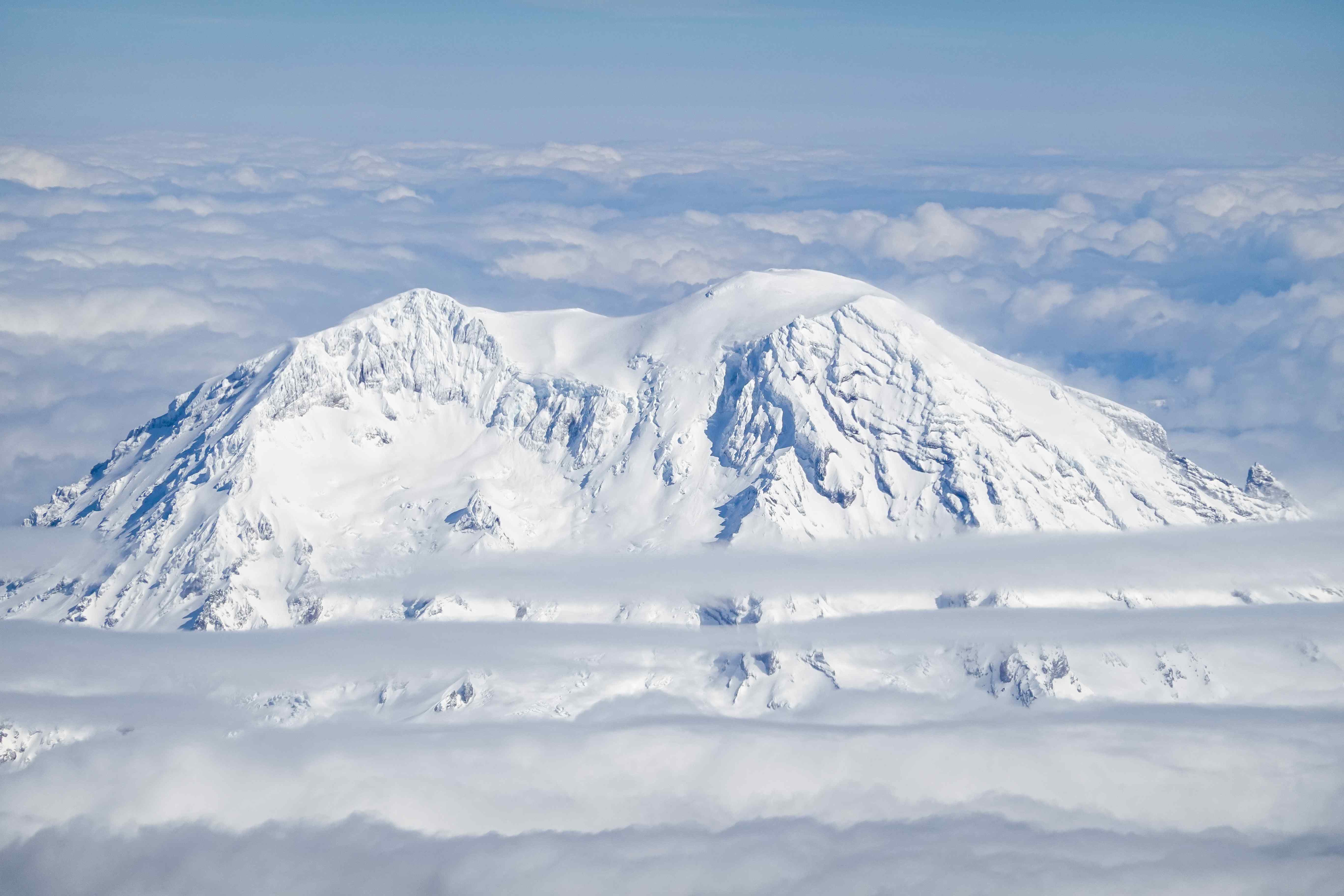Mount Rainier, an active stratovolcano in Washington State, stands as a majestic symbol of the Pacific Northwest. Rising 14,411 feet above sea level, it offers diverse ecosystems, breathtaking landscapes, and a wealth of outdoor activities. This guide will help you discover Mount Rainier’s natural wonders, from its glaciated peaks to its lush subalpine meadows, and provide essential information for planning your visit to this iconic national park.
What Are the Top Hiking Trails to Discover Mount Rainier?

Mount Rainier National Park boasts an extensive network of trails that cater to various skill levels and interests. Here are some of the most popular hiking options:
Easy to Moderate Trails
- Nisqually Vista Trail
- Length: 1.2 miles round-trip
- Difficulty: Easy
- Highlights: Paved trail with views of Mount Rainier and Nisqually Glacier
-
Best time: Mid-July to mid-September
-
Bench and Snow Lakes Trail
- Length: 2.6 miles round-trip
- Difficulty: Moderate
- Highlights: Two lakes reflecting Mount Rainier
-
Best time: July to October
-
Naches Peak Loop
- Length: 3.6 miles loop
- Difficulty: Moderate
- Highlights: Panoramic views and wildflower meadows
- Best time: Mid-July to early October
Moderate to Strenuous Trails
- Skyline Trail
- Length: 5.3 miles
- Difficulty: Moderate
- Highlights: Sweeping views of wildflower meadows and Mount Rainier
-
Best time: Mid-July to early October
-
Burroughs Mountain Trail
- Length: 8.6 miles round-trip
- Difficulty: Moderate to Strenuous
- Highlights: Panoramic views of Mount Rainier and surrounding landscape
-
Best time: Late July to September
-
Camp Muir Trail
- Length: 9 miles round-trip
- Difficulty: Strenuous
- Highlights: High-altitude camp with spectacular views
- Best time: Mid-July to early September
What Wildlife Can You Encounter When You Discover Mount Rainier?

Mount Rainier National Park is home to a diverse array of wildlife. Here’s what you might encounter:
Mammals
- Black Bears: Common throughout the park, especially near berry patches and fish streams
- Mountain Goats: Often seen at higher elevations, particularly active during summer
- Elk: Migrate seasonally between lower valleys and higher meadows
Birds
- Bald Eagles: Frequently spotted near lakes and rivers
- Clark’s Nutcrackers: Common in subalpine forests and meadows
| Animal | Habitat | Best Time to Observe |
|---|---|---|
| Black Bears | Forested areas, berry patches | Spring to Fall |
| Mountain Goats | Alpine and subalpine zones | Summer |
| Elk | Valleys and meadows | Fall (during migration) |
| Bald Eagles | Near water bodies | Year-round |
| Clark’s Nutcrackers | Subalpine forests | Summer |
What Is the Historical Significance of Mount Rainier?
Mount Rainier holds great historical and cultural importance:
- Indigenous Heritage: Sacred to numerous indigenous tribes, including the Nisqually, Puyallup, and Yakama
- National Park Designation: Established as the fifth national park in the United States in 1899
- Mountaineering History: First recorded ascent in 1870 by Hazard Stevens and P.B. Van Trump
The park’s establishment marked a significant milestone in early conservation efforts, aimed at protecting its unique ecosystems and natural resources.
What Are the Unique Geological Features to Discover at Mount Rainier?
Mount Rainier’s geology is characterized by its volcanic nature and glacial features:
- Active Volcano: Part of the Cascade Volcanic Arc with recent volcanic activity
- Glaciers: Home to 25 major glaciers covering about 35 square miles
- Subalpine Meadows: Extensive wildflower-filled meadows at higher elevations
These geological features contribute to Mount Rainier’s diverse ecosystems and stunning landscapes, making it a unique destination for nature enthusiasts and researchers alike.
How Can You Plan Your Visit to Discover Mount Rainier?
To make the most of your trip to discover Mount Rainier, consider the following tips:
- Best Time to Visit: July to September offers the most favorable weather and access to trails
- Entrance Fees: Purchase a National Park Pass in advance
- Accommodations: Book early, especially for summer visits
- Safety: Check trail conditions and weather forecasts before hiking
- Wildlife Viewing: Bring binoculars and maintain a safe distance from animals
By following these guidelines, you’ll be well-prepared to explore and discover Mount Rainier’s natural wonders safely and responsibly.
Discovering Mount Rainier offers a unique opportunity to experience one of America’s most iconic natural landmarks. From its diverse hiking trails and rich wildlife to its geological wonders and historical significance, Mount Rainier National Park provides endless opportunities for exploration and adventure. Whether you’re an avid hiker, a nature photographer, or simply seeking to immerse yourself in the beauty of the Pacific Northwest, Mount Rainier promises an unforgettable journey of discovery.
References:
1. Visit Rainier: Activities & Attractions
2. Wheatless Wanderlust: Hiking In Mount Rainier National Park
3. Hiking Project: Hiking Trails near Mount Rainier National Park
